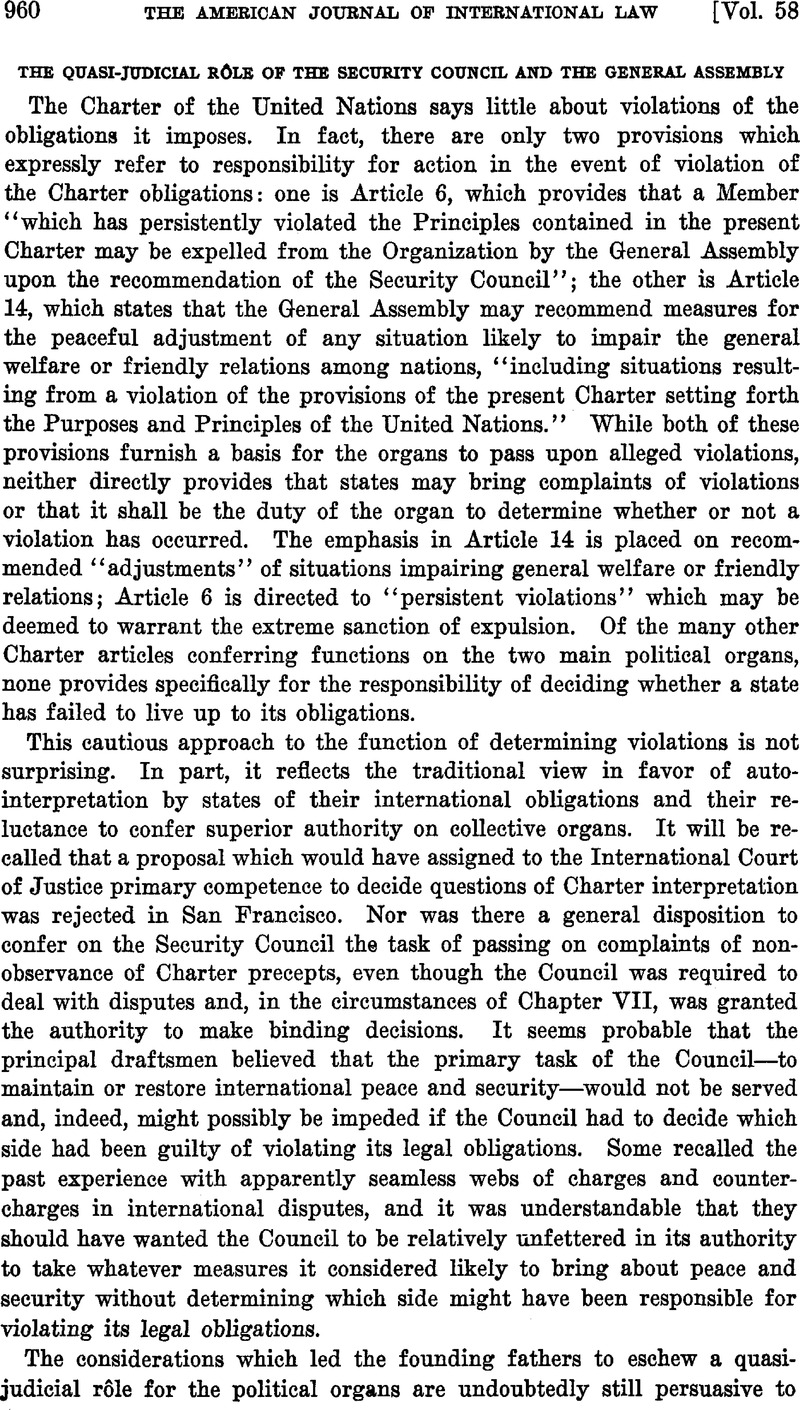Crossref Citations
This article has been cited by the following publications. This list is generated based on data provided by
Crossref.
Gross, Leo
1965.
The United Nations and the Role of Law.
International Organization,
Vol. 19,
Issue. 3,
p.
537.
Asamoah, Obed Y.
1966.
The Legal Significance of the Declarations of the General Assembly of the United Nations.
p.
68.
Asamoah, Obed Y.
1966.
The Legal Significance of the Declarations of the General Assembly of the United Nations.
p.
227.
Keith, Kenneth J.
1967.
The Role of Law in the United Nations.
SSRN Electronic Journal,
Kim, Jung-Gun
and
Howell, John M.
1972.
Conflict of International Obligations and State Interests.
p.
19.
1981.
Paths to Peace.
p.
385.
Klein, Eckart
1983.
Völkerrecht als Rechtsordnung Internationale Gerichtsbarkeit Menschenrechte.
Vol. 81,
Issue. ,
p.
467.
Halberstam, Malvina
1984.
Recognition, Use of Force, and the Legal Effect of United Nations Resolutions under the Revised Restatement of the Foreign Relations Law of the United States.
Israel Law Review,
Vol. 19,
Issue. 3-4,
p.
495.
Gross, Leo
1984.
Essays on International Law and Organization.
p.
159.
Provost, René
2002.
International Human Rights and Humanitarian Law.
Gardam, Judith
2004.
Necessity, Proportionality and the Use of Force by States.
Westra, Joel H.
2010.
Cumulative Legitimation, Prudential Restraint, and the Maintenance of International Order: A Re-examination of the UN Charter System1.
International Studies Quarterly,
Vol. 54,
Issue. 2,
p.
513.
Jeangène Vilmer, Jean-Baptiste
2011.
Pas de paix sans justice.
p.
269.
2011.
War, Aggression and Self-Defence.
p.
303.
Dunoff, Jeffrey L.
2013.
Netherlands Yearbook of International Law 2012.
Vol. 43,
Issue. ,
p.
99.
Sayapin, Sergey
2014.
The Crime of Aggression in International Criminal Law.
p.
3.
2015.
The ‘War on Terror' and the Framework of International Law.
p.
456.
Perrier, Benjamin
and
Levrat, Nicolas
2015.
Melting law: Learning from practice in transboundary mountain regions.
Environmental Science & Policy,
Vol. 49,
Issue. ,
p.
32.
RAMSDEN, Michael
2017.
Uniting for MH17.
Asian Journal of International Law,
Vol. 7,
Issue. 2,
p.
337.
Margariti, Stella
2017.
Defining International Terrorism.
Vol. 15,
Issue. ,
p.
109.
